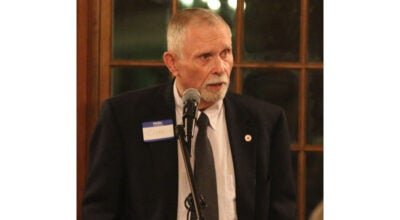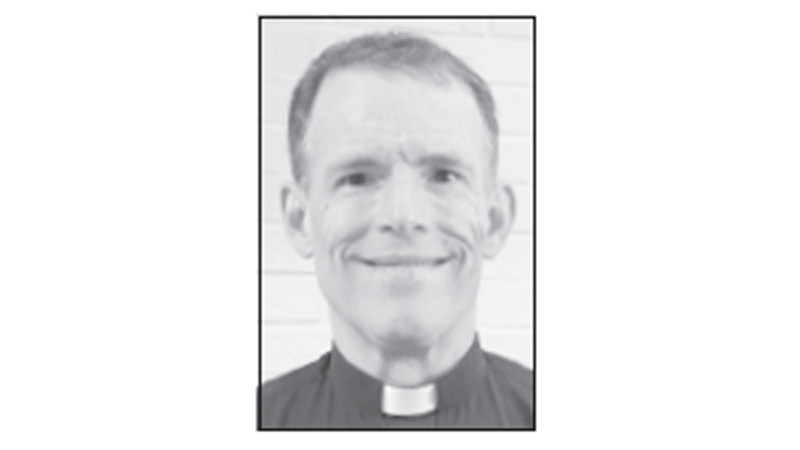Looking Back: D-Day programs observed in Southampton
Published 5:04 pm Tuesday, June 4, 2019
By Clyde Parker
June 9,1944
Early in the morning on Tuesday, June 6, 1944, more than 160,000 allied troops (United States, Canada, England) departed the south coast of England, mostly from Portsmouth and Southampton, and landed on a 50-mile stretch of French coastline to fight Nazi Germany. The beaches of Normandy were code-named: Sword, Juno, Gold, Omaha and Utah. The United States was assigned Omaha and Utah, Britain was assigned Gold and Sword, and Canada was assigned Juno.
Later that day, at 8 o’clock in the evening, Franklin citizens put on an impressive observance of the event. Lacking in anything approaching the nature of a “celebration,” the intermittent ringing of church bells throughout the town served to call people to the exercises that were being held simultaneously in the Franklin High School auditorium, for white people, and at the First Baptist Church, for Negroes. Everyone who had a radio — meaning practically everybody — sat by their instruments throughout the day to get the news.
Really not knowing, but many of our Southampton County citizens were aware, and anxious, that some of our native sons were most likely involved in the invasion.
At the high school, the service was given quite a military air by the presence of a large squad of sailors, led by Commandant T.P. Wilkinson, from the Franklin Naval Air Base and members of Troop 23 of the Virginia State Guard.
J. Edward Moyler Sr. was chairman of the observance. “America” was sung by the large audience and the invocation was offered by the Rev. R.D. Stephenson of the Franklin Baptist Church. John Crump Parker spoke effectively on comparisons between the first world war and this the second world war. James L. Camp Jr. sang the stirring “Battle Hymn of the Republic” accompanied on the piano by Mrs. S.W. Rawls.
During the three-month period preceding the actual invasion, preparations were being made for the various Southampton County observances that took place on Tuesday. The invasion, although a secret and well-planned operation, was very much anticipated throughout the entire country. But, of course, it was not known when, or exactly where, the invasion would take place. Periodic reports of planned local recognition of the anticipated invasion were being publicized through The Tidewater News.
General Dwight D. Elsenhower, Supreme Allied Commander, called the overall operation, code named “Operation Overlord,” a crusade in which “we will accept nothing less than full victory.” The invasion had been called several different things. In this country, prior to the actual invasion, it was being referred to as “I-Day.” Then, when the invasion was announced to the world by radio, it quickly gained the title of “D-Day.” (The meaning of the “D” was explained several different ways by officials and commentators. General Eisenhower settled the confusion when he stated that “D-Day” means “departed day,” the day the allied forces departed England to go to France.)
More than 160,000 men, over 100,000 vehicles of various types, almost 5,000 ships, and nearly 13,000 aircraft supported the D-Day invasion. The amphibious invasion, code-named “Operation Neptune” was preceded by extensive allied aerial and naval bombardments and 24,000 airborne troops. By the end of the day, the allies had gained a foothold in northwestern Europe. By the end of June, the allies had seized the vital port of Cherbourg and were poised to continue their march across France.
The cost in lives on D-Day was high. More than 9,000 allied soldiers were killed or wounded, but their sacrifice allowed more than 100,000 soldiers to begin the slow, hard slog across Europe to defeat Hitler’s crack troops. By late August of 1944, all of northern France had been liberated, and by the following spring the allies had just about defeated the Germans.
•••
NOTE: During the weeks, months and years following D-Day, people in Southampton were becoming aware of those from here that were involved in the invasion. Some did not survive to tell about their experiences. A feature in the June 2,1994, edition of The Tidewater News included stories of some of those who did survive D-Day and the war.
• Courtland’s Joe Magette, a corporal and heavy equipment operator in the 531st Amphibious Brigade, was in the third wave to land on Utah Beach. He was wounded twice.
• Lt. Robert Turnbull “Tabb” Gillette, also of Courtland, commander of landing craft tank carriers, was involved in carrying six tanks onto Omaha Beach, in the fifth wave.
• Sergeant William H. Howell Jr. of Franklin was involved with the Corps of Engineers, assembling equipment being conveyed from Southampton, England, to the Normandy coast.
• Raymond J. Cobb of Franklin, an aircraft sheet metal worker, was at a base in England repairing battle-damaged B-17 bombers.
• Sergeant Milton Futrell of Courtland, with the U.S. Army Medical Corps, landed on Omaha Beach on D-Day plus five.
• Sergeant Lloyd Taylor of Newsoms, with the 29th Cavalry Reconnaissance Troop, was in the first wave onto Omaha Beach. He was an M-8 armored car communications operator. The vehicle sunk to the bottom of the channel before he landed. He had to hit the beach on his own.
• Jack W. Vick of Courtland was positioned with the Royal Naval College in Dartmouth, England, as a logistics coordinator for the invasion. He endured much German bombing and air raids.
• Private First-Class Allen Minetree, with the 16th Infantry Regiment of the 1st Infantry Division, was in the first wave on Omaha Beach. He was awarded two Silver Stars for gallantry and a Purple Heart for wounds. A native of Petersburg, he took a job, in 1951, with Camp Manufacturing Co. in Franklin.
• Corporal Wilson Carr of Franklin was in the first wave on Omaha Beach. He was on a Higgins boat with 31 other soldiers. Only seven survived the landing. The lieutenant in charge could not function; therefore, Carr, as the next highest ranked man, took command of the unit. He sustained minor injuries. For decades, he did not talk to anyone about his war experience; but, in 1979, Gaynelle Riddick, a Franklin High School history teacher, invited him to a class during which he, for the first time, “opened up.”





